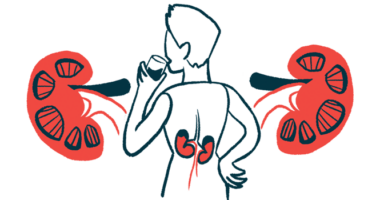Rare combination of aHUS, heart arrhythmia seen in 8-year-old girl
Child carried a mutation in a gene that can lead to 'cardiovascular disorders'

An 8-year-old girl was diagnosed with a rare case of atypical hemolytic uremic syndrome (aHUS) and cardiac arrhythmias, or abnormal heartbeats, according to a recent report from Turkey.
While known for its damage to the kidneys, aHUS can affect the heart, with cases of heart muscle disease and heart failure reported. But arrhythmias are unusual, the scientists noted, and the child’s condition improved after a rapid diagnosis allowed adequate treatment and care.
“With this case, we want to highlight how a potentially fatal condition can be successfully managed with early diagnosis, the appropriate degree of care, and devoted teamwork,” they wrote in the report “Cardiac Manifestation in a Child With Atypical Hemolytic Uremic Syndrome,” published in Clinical Pediatrics.
aHUS affects the heart in 3% to 10% of cases, scientists reports
aHUS is characterized by the excessive activation of the complement cascade, a part of the immune system, causing inflammation and the formation of blood clots in small blood vessels, mainly affecting the kidneys and risking kidney failure.
Another common aHUS symptom is hemolytic anemia, caused by the destruction of red blood cells and leading to a shortage of oxygen being supplied to the body’s organs. The report also noted that the disease, in about 3% to 10% of cases, affects the heart.
Clinicians in Ankara described the case of an 8-year-old girl who was admitted to their hospital with diarrhea. A physical examination found swelling around the eyes, pale skin, and high blood pressure (hypertension).
Laboratory blood tests shows signs of hemolytic anemia, and high levels of creatinine and urea nitrogen that were indicative of kidney damage. Her urine contained abnormally high quantities of protein, a condition known as proteinuria and another sign of kidney damage, and the presence of blood (hematuria).
Initially diagnosed with HUS, a rare condition caused by bacterial toxins, she was treated with plasma exchange, but her symptoms did not ease. Due to uremia (abnormal blood concentrations of waste products normally filtered by the kidneys) and low urine excretion, the patient was started on hemodialysis to filter her blood.
When tests failed to find a toxic known to cause HUS, clinicians considered aHUS and began treatment with Soliris (eculizumab), which improved her blood parameters.
After the girl’s urea levels and urine volume came to within normal levels, she stopped dialysis and was discharged with a plan to continue with Soliris, as well as medications to treat hypertension and increase urine volume.
Seizures and heart arrhythmias preceded an aHUS diagnosis
Five days later, she was readmitted due to a generalized seizure. Further examination revealed she had brain swelling — consistent with posterior reversible encephalopathy — and abnormal brain activity. The patient received medications to resolve the seizures.
During follow-up, a cardiac electrocardiogram (ECG) revealed the presence of heart arrhythmias. She now was given medications to control her heart rate, including lidocaine and propranolol, and ion supplements to treat low potassium and magnesium levels.
Other medications also were used — including the anticoagulant heparin and aspirin to prevent blood clots — and the girl was intubated due to a “risk of fatal ventricular arrhythmias,” although she remained asymptomatic, the scientists noted.
“In aHUS, electrolyte disturbances and frequently administered drugs such as diuretics may cause … cardiac rhythm disturbances,” the team wrote. “We believe that rapid correction of electrolyte disturbances, early intubation” and other steps taken effectively treated her condition.
Genetic testing then found the presence of two mutations in the CFB gene, whose mutations are associated with aHUS.
While “extremely rare … CFB mutations are particularly susceptible to cardiovascular disorders,” the scientists noted.
The girl continues to be followed and to show normal kidney function, they added, but she remains on medications to prevent seizures due to persistent abnormal brain activity.
“In conclusion, despite being one of the uncommon extrarenal [beyond the kidneys] symptoms, cardiac involvement in aHUS should not be underestimated. Patients with aHUS need to have at least one ECG performed,” the scientists wrote.







